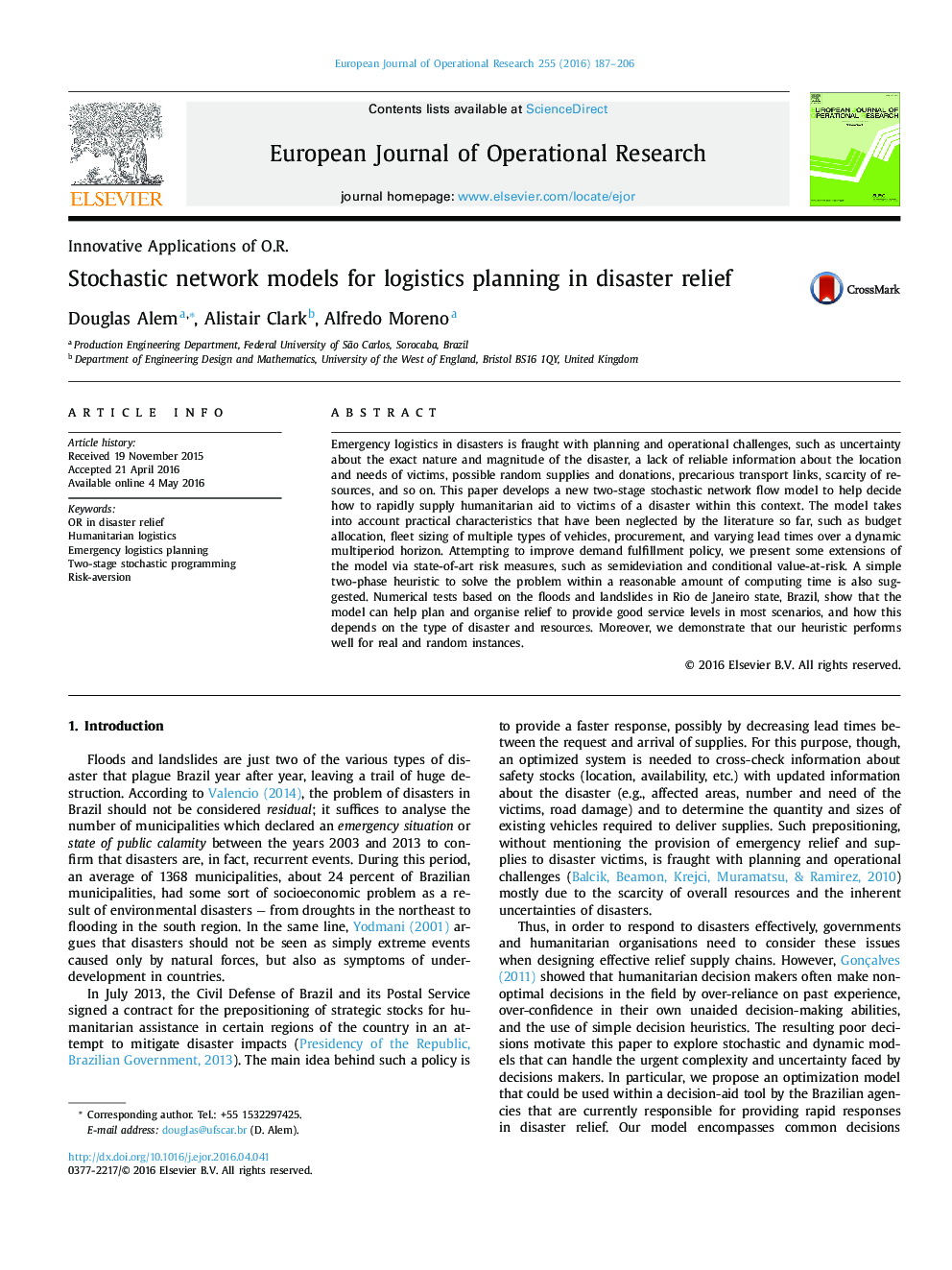| Article ID | Journal | Published Year | Pages | File Type |
|---|---|---|---|---|
| 480430 | European Journal of Operational Research | 2016 | 20 Pages |
•We propose a new dynamic two-stage stochastic network flow model for disaster relief.•The stochastic mixed-integer program supports preparedness and response decisions.•We devise scenarios to account for the magnitude of any disaster.•We model risk aversion via minimax, semideviation, and Conditional Value-at-Risk approaches.•A two-phase heuristic is developed as an alternative for solving larger instances.
Emergency logistics in disasters is fraught with planning and operational challenges, such as uncertainty about the exact nature and magnitude of the disaster, a lack of reliable information about the location and needs of victims, possible random supplies and donations, precarious transport links, scarcity of resources, and so on. This paper develops a new two-stage stochastic network flow model to help decide how to rapidly supply humanitarian aid to victims of a disaster within this context. The model takes into account practical characteristics that have been neglected by the literature so far, such as budget allocation, fleet sizing of multiple types of vehicles, procurement, and varying lead times over a dynamic multiperiod horizon. Attempting to improve demand fulfillment policy, we present some extensions of the model via state-of-art risk measures, such as semideviation and conditional value-at-risk. A simple two-phase heuristic to solve the problem within a reasonable amount of computing time is also suggested. Numerical tests based on the floods and landslides in Rio de Janeiro state, Brazil, show that the model can help plan and organise relief to provide good service levels in most scenarios, and how this depends on the type of disaster and resources. Moreover, we demonstrate that our heuristic performs well for real and random instances.
